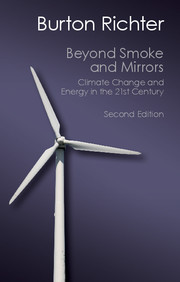5 - Predicting the Future
Published online by Cambridge University Press: 05 November 2014
Summary
Who Does It?
There are many sayings about the difficulty of predicting the future. My favorite is naturally Richter’s First Law; “Predicting the future is hard to do because it hasn’t happened yet.” It is especially hard when you are trying to predict what will happen 100 years from now and the science behind the prediction is really only 50 years old. It was the work of Keeling and Revelle in the 1950s mentioned earlier that jump-started the science community’s work on climate change and global warming. It is the Intergovernmental Panel on Climate Change (IPCC) that does the predictions today.
My own involvement in climate change research has been more as an observer than as a participant. My first exposure to the issue was in 1978 when a group that I am in, called the JASONs, took it up. The JASONs are a collection of mainly academics that meet every summer for about six weeks to work on problems of importance to the US government. In 1978 a subgroup of the JASONs led by Gordon MacDonald, a distinguished geophysicist, began a study of climate change for the US Department of Energy. The JASONs always have many pots on the stove and I was working on something else. However, we all were fascinated by the climate issue, and nearly everyone sat in on the sessions and critiqued the report. Its conclusion was that doubling atmospheric CO2 would increase the average global surface temperature by 4.3 °F (2.4 °C), and that the increase at the poles would be much more than the average. The JASON climate model included a more sophisticated treatment of the ocean–atmosphere interaction than had been used before. The model was a simplified one that could be solved without big computers, and the answer was in fairly good agreement with what we get now for the average temperature increase, but overstated the polar increase. The report was influential in increasing government funding for climate change research.
- Type
- Chapter
- Information
- Beyond Smoke and MirrorsClimate Change and Energy in the 21st Century, pp. 56 - 76Publisher: Cambridge University PressPrint publication year: 2014



